Hydrogen Fuel Cell and Ultracapacitor Based Electric Power System Sliding Mode Control: Electric Vehicle Application
Abstract
1. Introduction
- The unknown bounds of the model perturbations challenge the robust controller design [10].
2. Mathematical Model of Hydrogen Fuel Cell/Ultra Capacitor/Direct Current-Direct Current (HFC/UC/DC-DC) Converter/Servomotor System
2.1. Mathematical Model of HFC
2.2. Mathematical Model of the DC–DC Unidirectional Boost Power Converter
2.3. Mathematical Model of Ultra Capacitor Controlled by Bidirectional DC–DC Buck (Buck/Boost) Converter
- (a)
- is more agile than the HFC in following the fast load current command profile.
- (b)
- allows charging and discharging multiple times.
2.4. Mathematical Model of a Servomotor
2.5. Mathematical Model of HFC/DC-DC Boost Converter/UC/Servomotor
3. Problem Formulation
- Given on line (for instance, it can be a command generated by an electric car driver), design the controller in terms of that drives in the presence of the smooth bounded disturbance torque as in Equations (13) and (15).
- The output of this controller is considered as a command that is to be followed by the HFC/UC/DC-DC boost and boost/buck converters in the inner loop of the electric power system (Figure 4) that generates . The tracking is enforced by the controls .
4. The Controller Design: Relative Degree Approach
4.1. HFC and UC Current Command Generator
4.2. Controlling and
4.2.1. UC Control: 1-SMC and 2-SMC Approaches
- (a)
- current control (UC current supply mode),
- (b)
- voltage control (UC charge mode).
The Control Design in Control Mode: 1-SMC Approach
- is bounded ( i.e.,)
- the control in Equation (27) is sufficiently large to assure the existence of the sliding mode (i.e.,).
The Controller Design in Control (Charge) Mode: 2-SMC Approach
4.2.2. The Control v3 Design: PI Control Approach
4.3. Controlling and : 1-SMC and Adaptive Second Order Sliding Mode Control Approaches
4.3.1. The Control v1 Design: 1-SMC Approach
- is bounded (i.e.,).
- the control v1 in Equation (34) is sufficiently large to assure the existence of the sliding mode (i.e.,).
4.3.2. The Control Design: Adaptive Super-Twisting Algorithm
- the gain is known, and
- the derivative of is bounded (i.e., with the unknown boundary ).
4.4. Controller Design for Servomotor Speed : Adaptive Twisting Algorithm
- the gain is known,
- the term is bounded (i.e., with the unknown boundary ).
5. Case Study
5.1. Simulation Set Up
5.2. Simulation Results
6. Conclusions
Author Contributions
Funding
Conflicts of Interest
Abbreviations
| HFC | Hydrogen fuel cell |
| UC | Ultra-capacitor |
| 1-SMC | The conventional first order sliding mode controllers |
| 2-ASMC | Adaptive-gain second order SMC |
| HFCEV | Hydrogen fuel cell electric vehicles |
References
- Fueling the Future Hydrogen Fuel Cell Vehicles in the 21st Century. Available online: http://serc.berkeley.edu/fueling-the-future-hydrogen-fuel-cell-vehicles-in-the-21st-century/ (accessed on 20 October 2015).
- Five Reasons Why Ultracapacitors Are Attractive to Auto Manufacturers. Available online: http://www.environmentalleader.com/2012/01/10/five-reasons-why-ultracapacitors-are-attractive-to-auto-manufacturers/ (accessed on 12 January 2010).
- Dc Motors Deliver High Performance and Efficiency for Electric Motorcycles. Available online: http://www.engineerlive.com/content/21329 (accessed on 21 February 2013).
- Ashok, R.; Shtessel, Y. Control of fuel cell-based electric power system using adaptive sliding mode control and observation techniques. J. Frankl. Inst. 2015, 352, 4911–4934. [Google Scholar] [CrossRef]
- Hilairet, M.; Ghanes, M.; Bethoux, O.; Tanasa, V.; Barbot, J.-P.; Normand-Cyrot, D. A passivity-based controller for coordination of converters in a fuel cell system. Control. Eng. Pr. 2013, 21, 1097–1109. [Google Scholar] [CrossRef]
- Ghanes, M.; Hilairet, M.; Barbot, J.-P.; Bethoux, O. Singular Perturbation Control for Coordination of Converters in a Fuel Cell System; ELECTRIMACS: Cergy-Pontoise, France, 2011; pp. 1–8. [Google Scholar]
- Ashok, R.S.; Shtessel, Y.B. Control of a fuel cell vehicle using adaptive sliding mode control: Servomotor application. In Proceedings of the American Control Conference, Boston, MA, USA, 6–8 July 2016; pp. 2235–2240. [Google Scholar]
- Correa, J.; Farret, F.A.; Canha, L.N.; Simões, M.G. An Electrochemical-Based Fuel-Cell Model Suitable for Electrical Engineering Automation Approach. IEEE Trans. Ind. Electron. 2004, 51, 1103–1112. [Google Scholar] [CrossRef]
- Khan, M.J.; Iqbal, M.T. Dynamic Modelling and Simulation of a Fuel Cell Generator. Fuel Cells 2005, 5, 97–104. [Google Scholar] [CrossRef]
- Kunusch, C.; Puleston, P.F.; Mayosky, M.A.; Riera, J. Sliding Mode Strategy for PEM FCs Stacks Breathing Control Using a Super-Twisting Algorithm. IEEE Trans. Control Syst. Technol. 2009, 17, 167–174. [Google Scholar] [CrossRef]
- Olm, J.M.; Oton, X.R.; Shtessel, Y. Stable inversion-based robust tracking control in DC-DC nonminimum phase switched converters. Automatica 2011, 47, 221–226. [Google Scholar] [CrossRef]
- Isidori, A. Nonlinear Control Systems, 3rd ed.; Springer: London, UK, 1995. [Google Scholar]
- Shtessel, Y.B.; Zinober, A.S.I.; Shkolnikov, C. Sliding mode control of boost and buck-boost power converters using method of stable system centre. Automatica 2003, 39, 1061–1067. [Google Scholar] [CrossRef]
- Shtessel, Y.; Edwards, C.; Fridman, L.; Levant, A. Sliding Mode Control and Observation; Birkhauser: New York, NY, USA, 2014. [Google Scholar]
- Shtessel, Y.B.; Moreno, J.A.; Fridman, L. Twisting sliding mode control with adaptation: Lyapunov design, methodology and application. Automatica 2017, 75, 229–235. [Google Scholar] [CrossRef]
- Shtessel, Y.B.; Taleb, M.; Plestan, F. A novel adaptive-gain supertwisting sliding mode controller: Methodology and application. Automatica 2012, 48, 759–769. [Google Scholar] [CrossRef]
- Ashok, R.; Shtessel, Y.; Smith, J. Sliding mode control of electric power system comprised of fuel cells, DC-DC boost converters and ultracapacitors. In Proceedings of the American Control Conference, Washington, DC, USA, 17–19 June 2013; pp. 5766–5771. [Google Scholar]
- Vishnyakov, V. Proton exchange membrane fuel cells. Vacuum 2006, 80, 1053–1065. [Google Scholar] [CrossRef]
- Padullésa, J.; Aultb, G.W.; McDonald, J.R. An integrated SOFC plant dynamic model for power systems simulation. J. Power Sources 2000, 86, 495–500. [Google Scholar] [CrossRef]
- Belmokhtar, K.; Hammoudi, M.H.; Doumbia, M.L.; Agbossou, K. Modelling and Fuel Flow Dynamic Control of Proton Exchange Membrane Fuel Cell. In Proceedings of the 4th International Conference on Power Engineering, Energy and Electrical Drives, Istanbul, Turkey, 13–17 May 2013; pp. 415–420. [Google Scholar]
- Krstic, M.; Kanellakopoulos, I.; Kokotovic, P. Nonlinear and Adaptive Control Design; Wiley: New York, NY, USA, 1995. [Google Scholar]
- Dorf, R.; Bishop, R. Modern Control Systems, 12th ed.; Prentice Hall: Upper Saddle River, NJ, USA, 2010. [Google Scholar]
- Boiko, I.; Fridman, L. Analysis of chattering in continuous sliding mode controllers. IEEE Trans. Autom. Control 2005, 50, 1442–1446. [Google Scholar] [CrossRef]
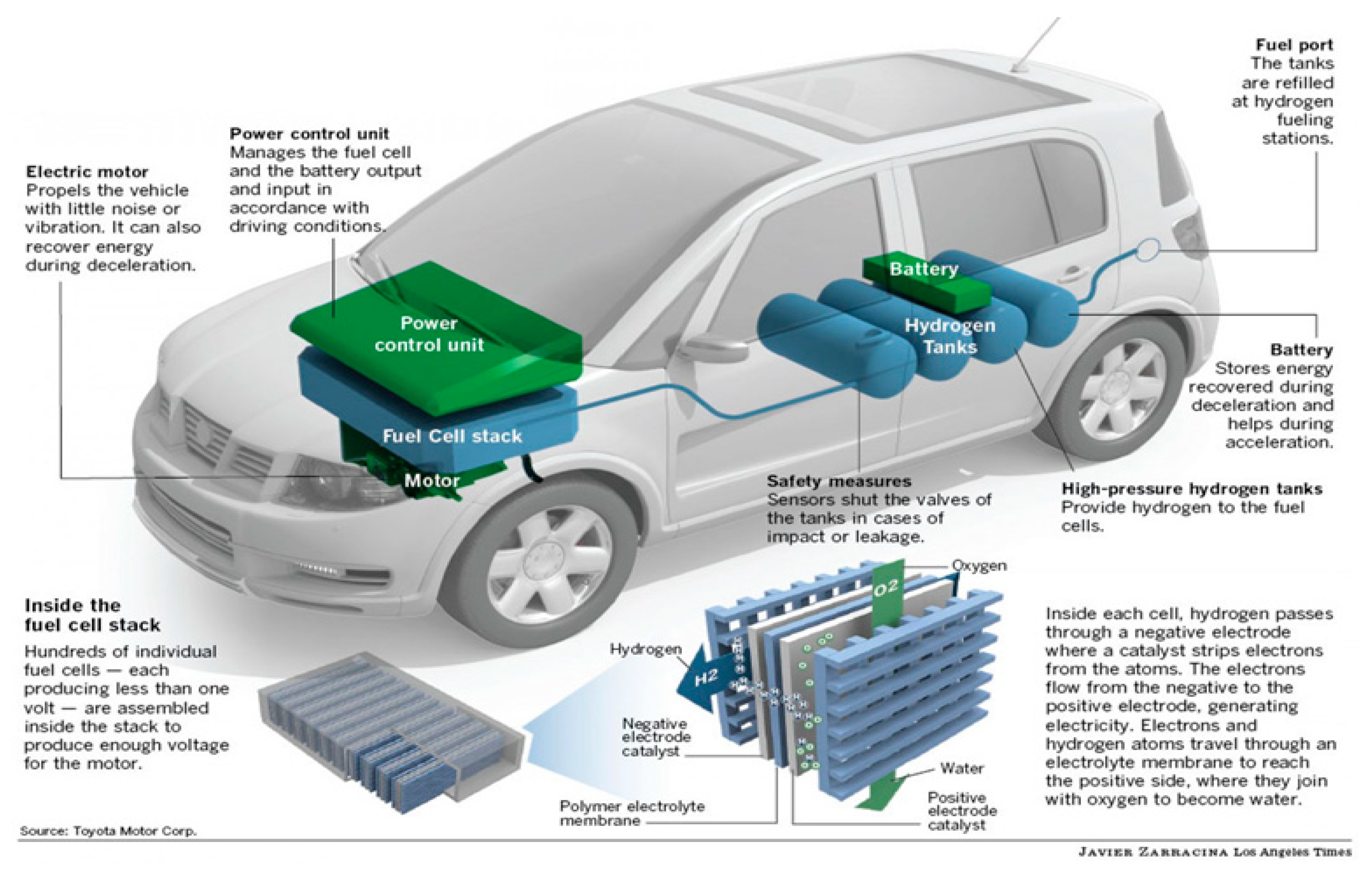

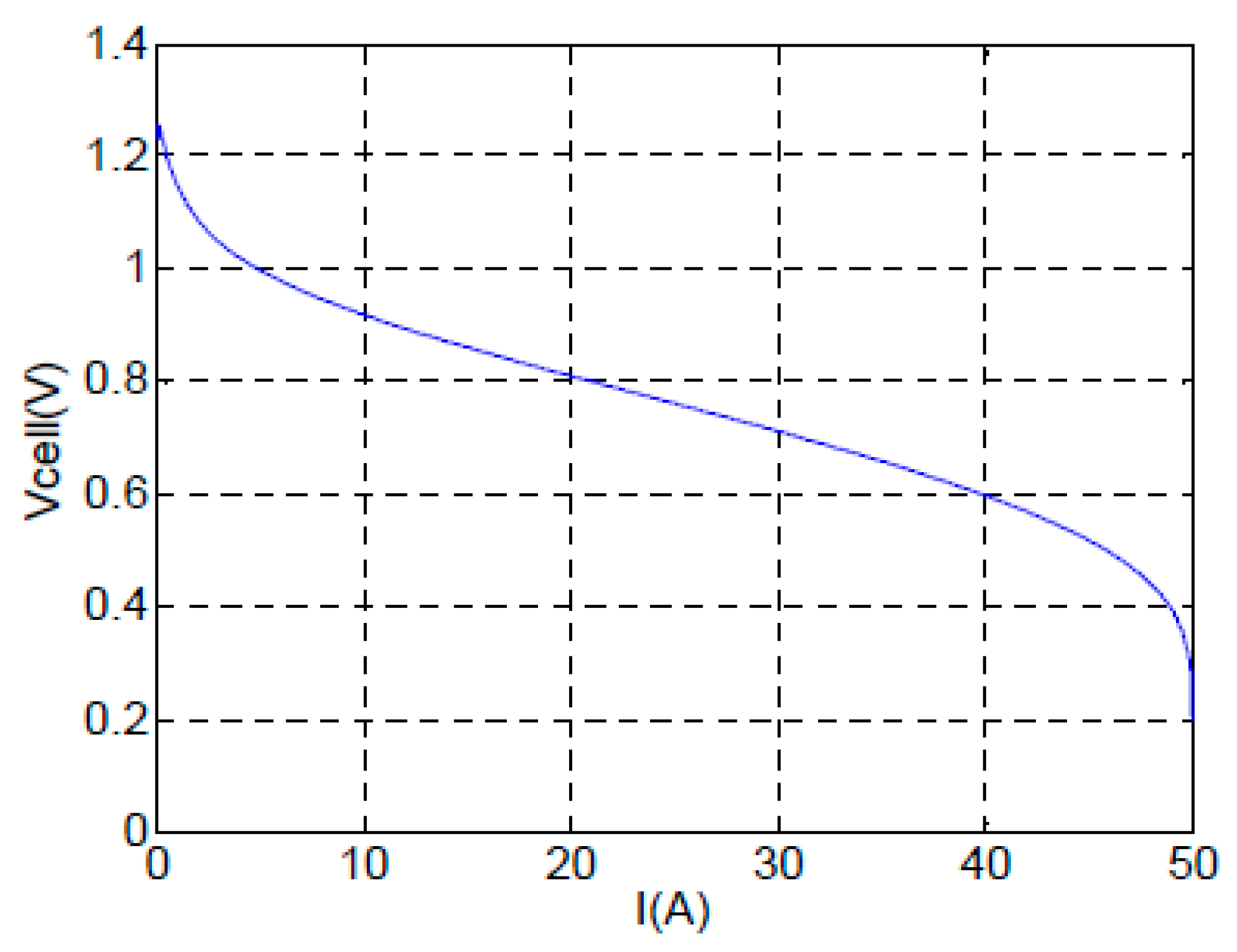
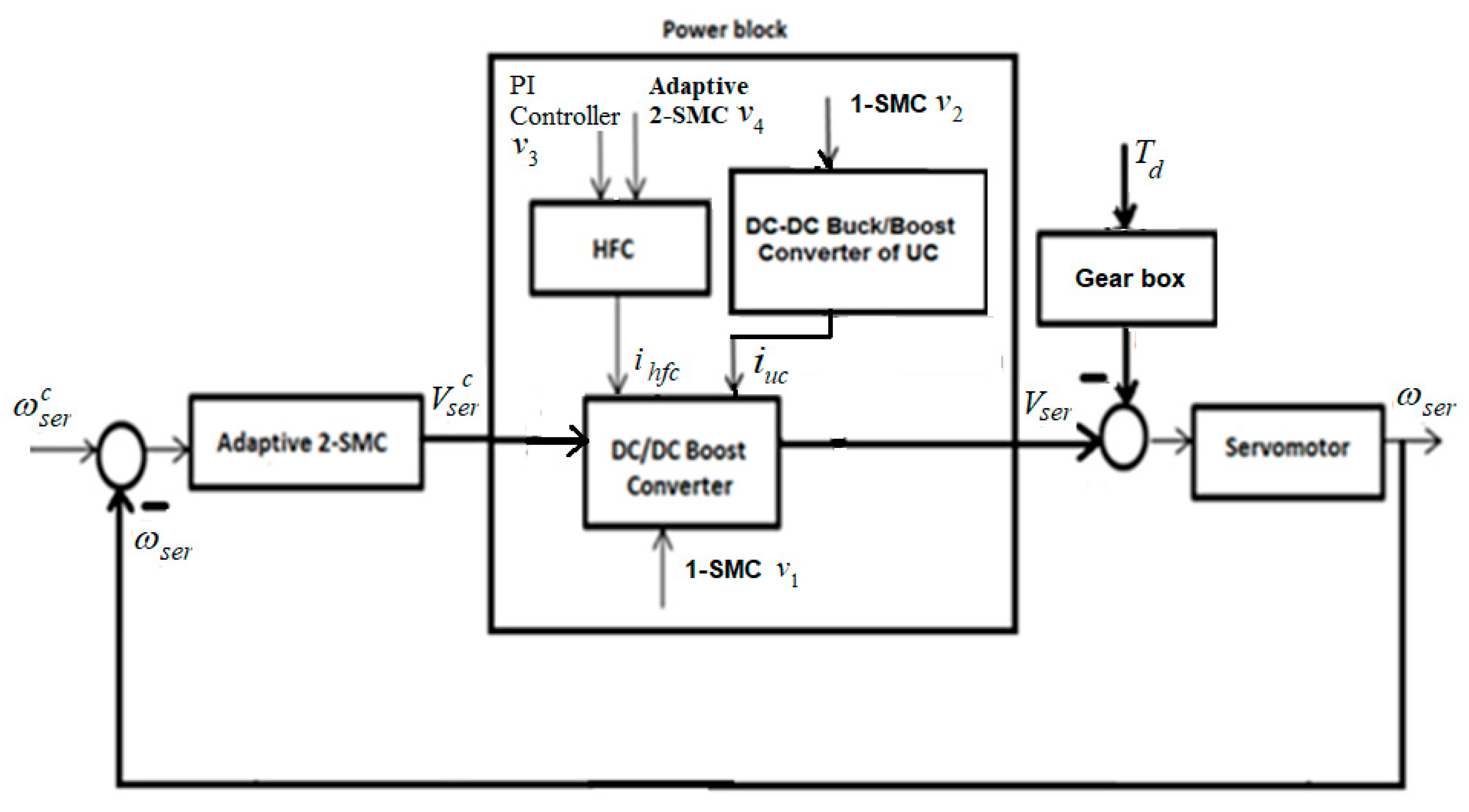
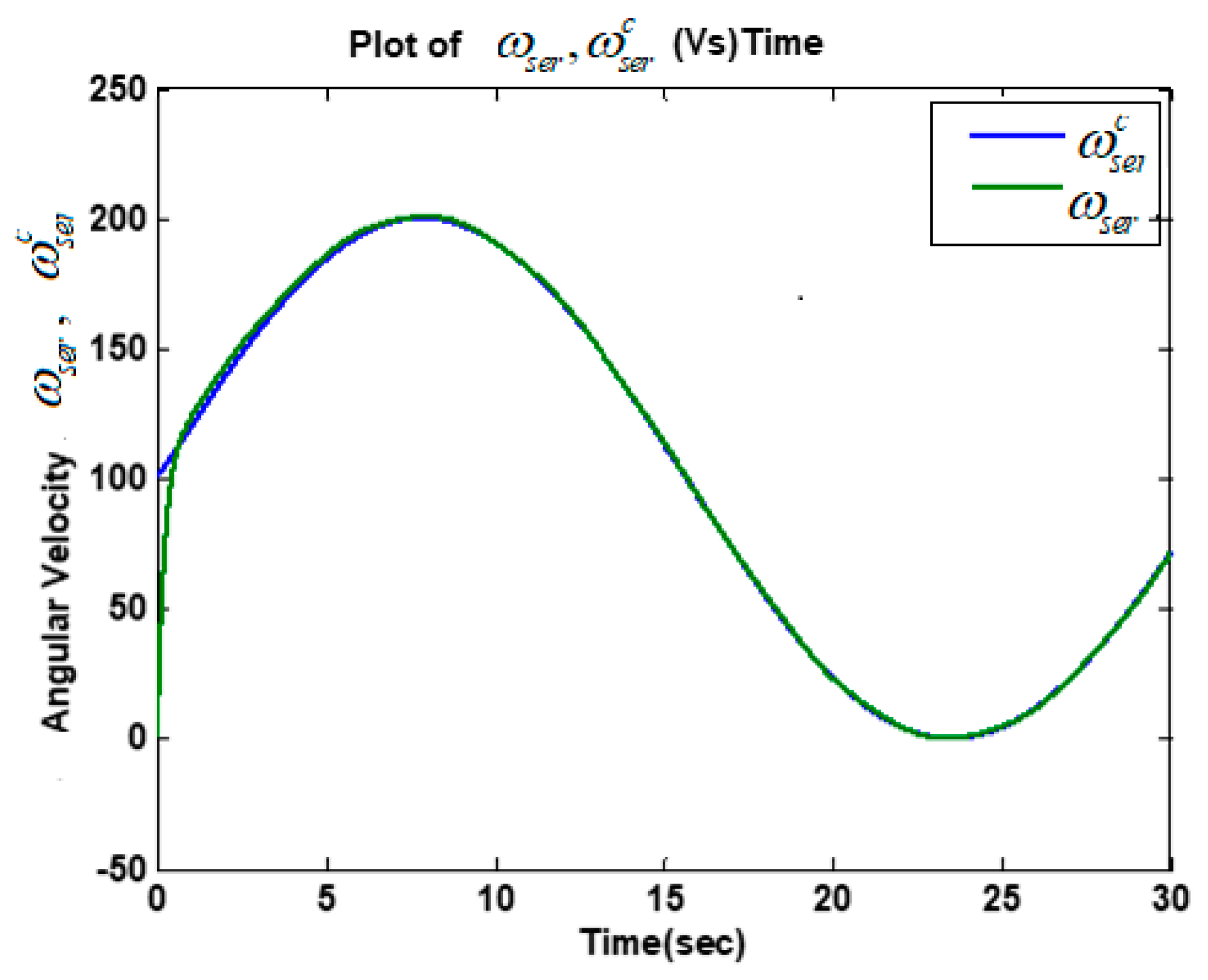
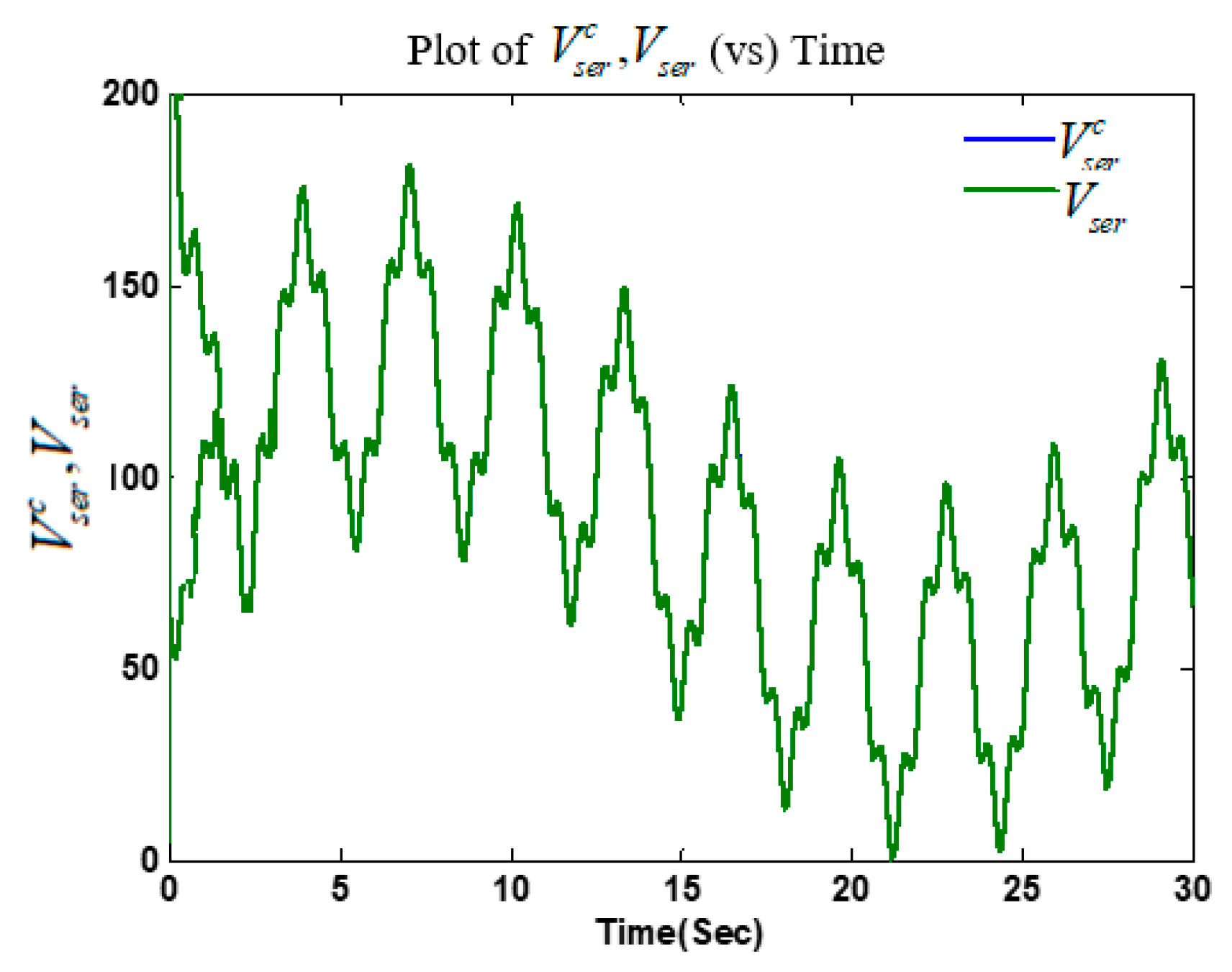
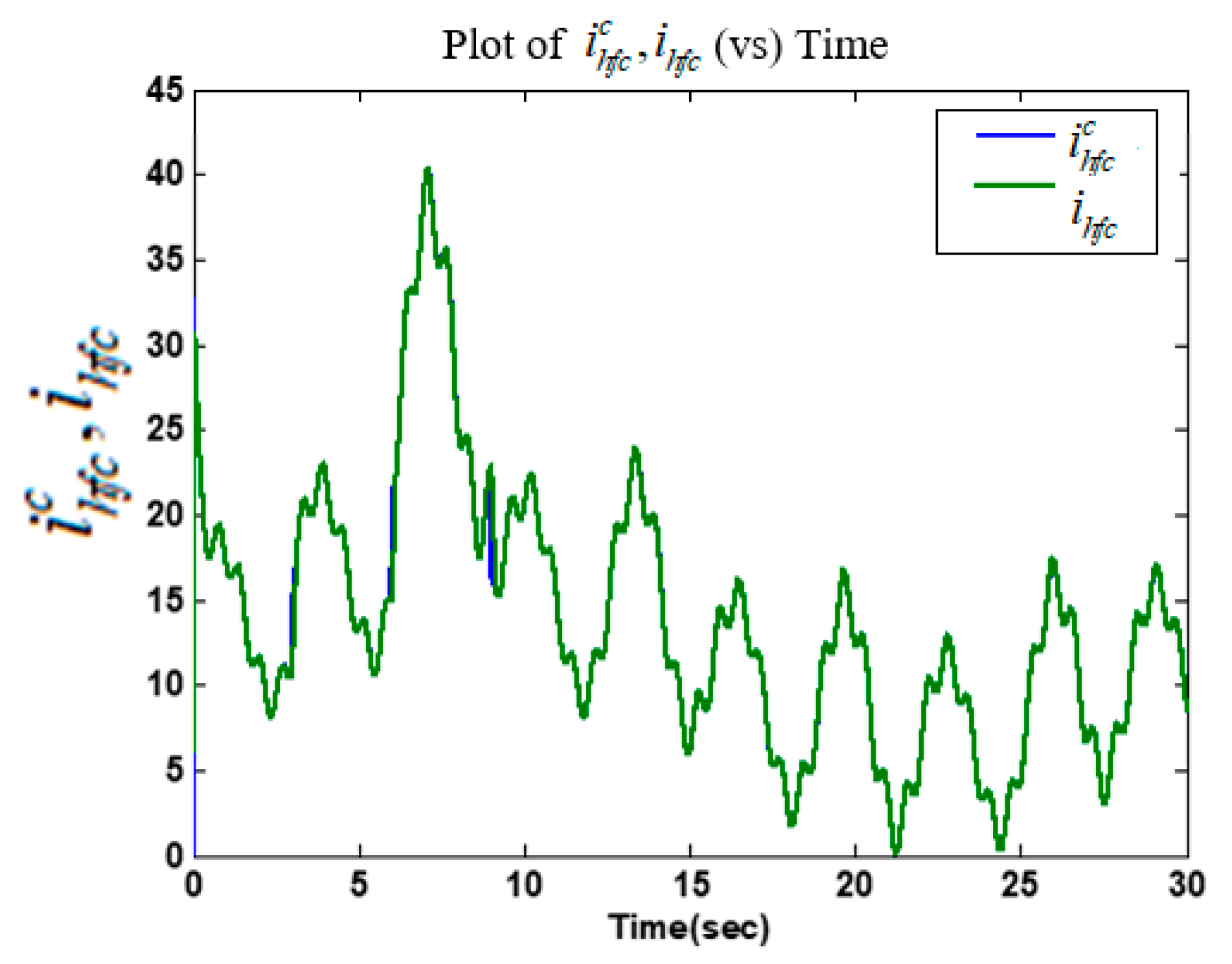
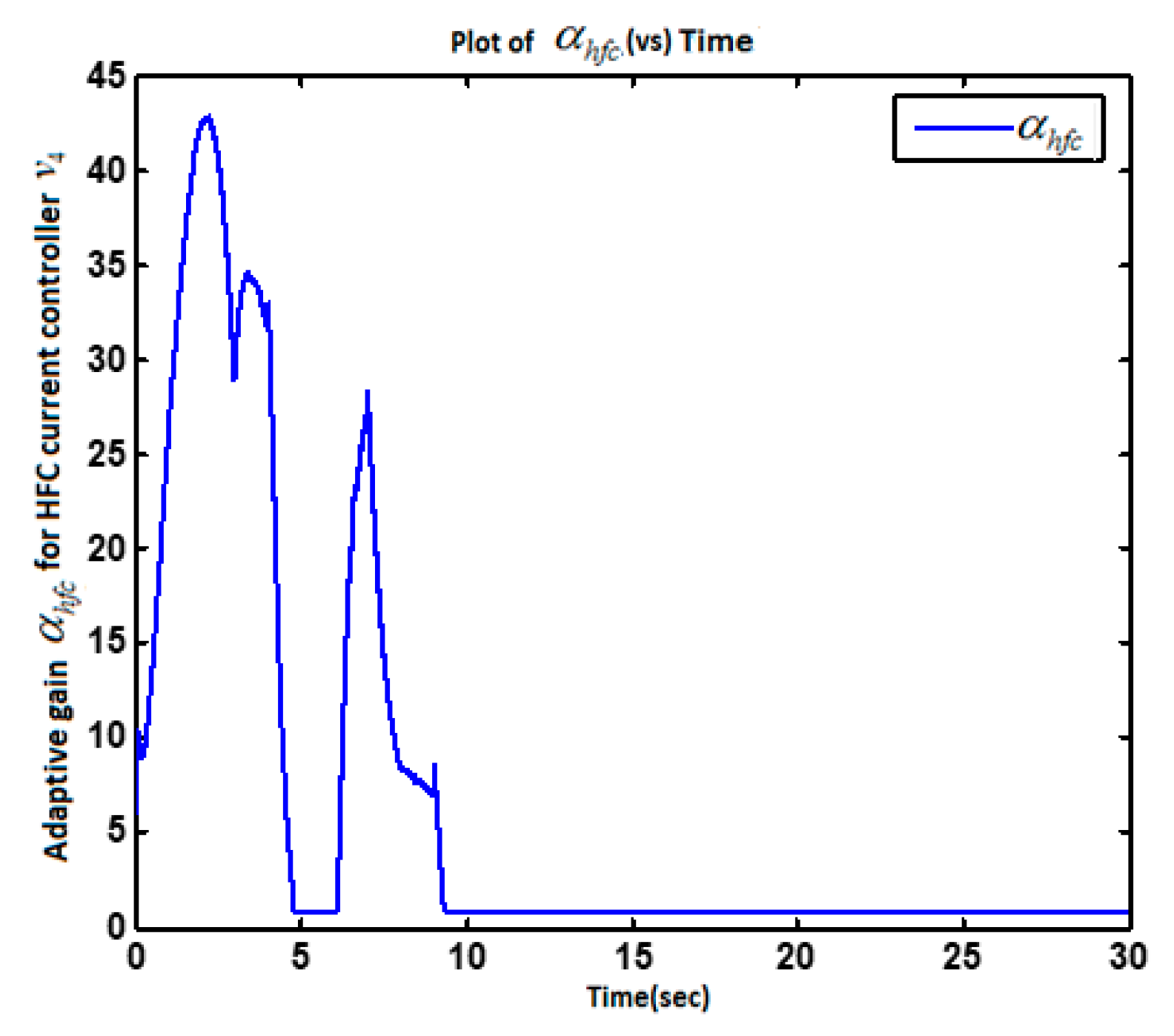
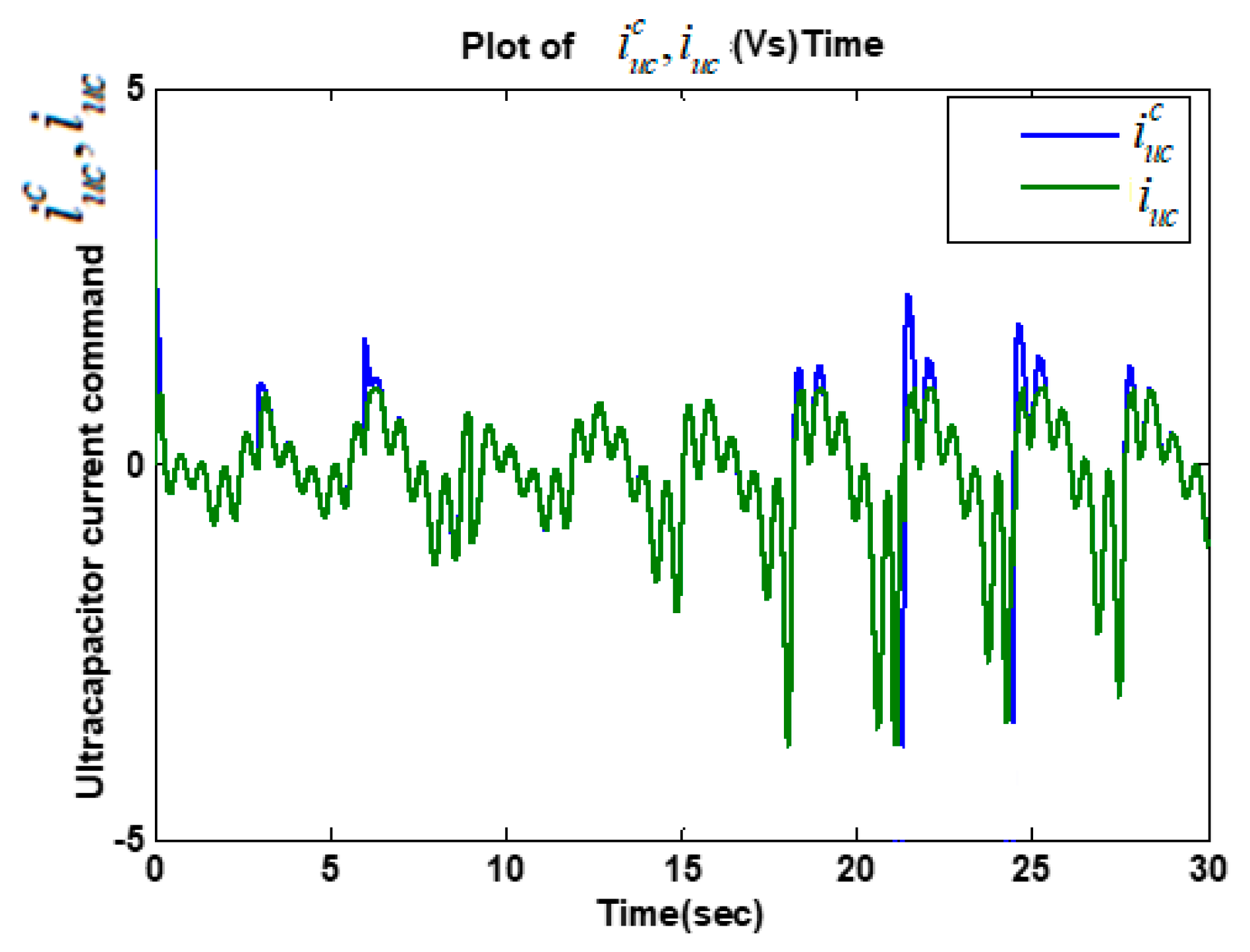

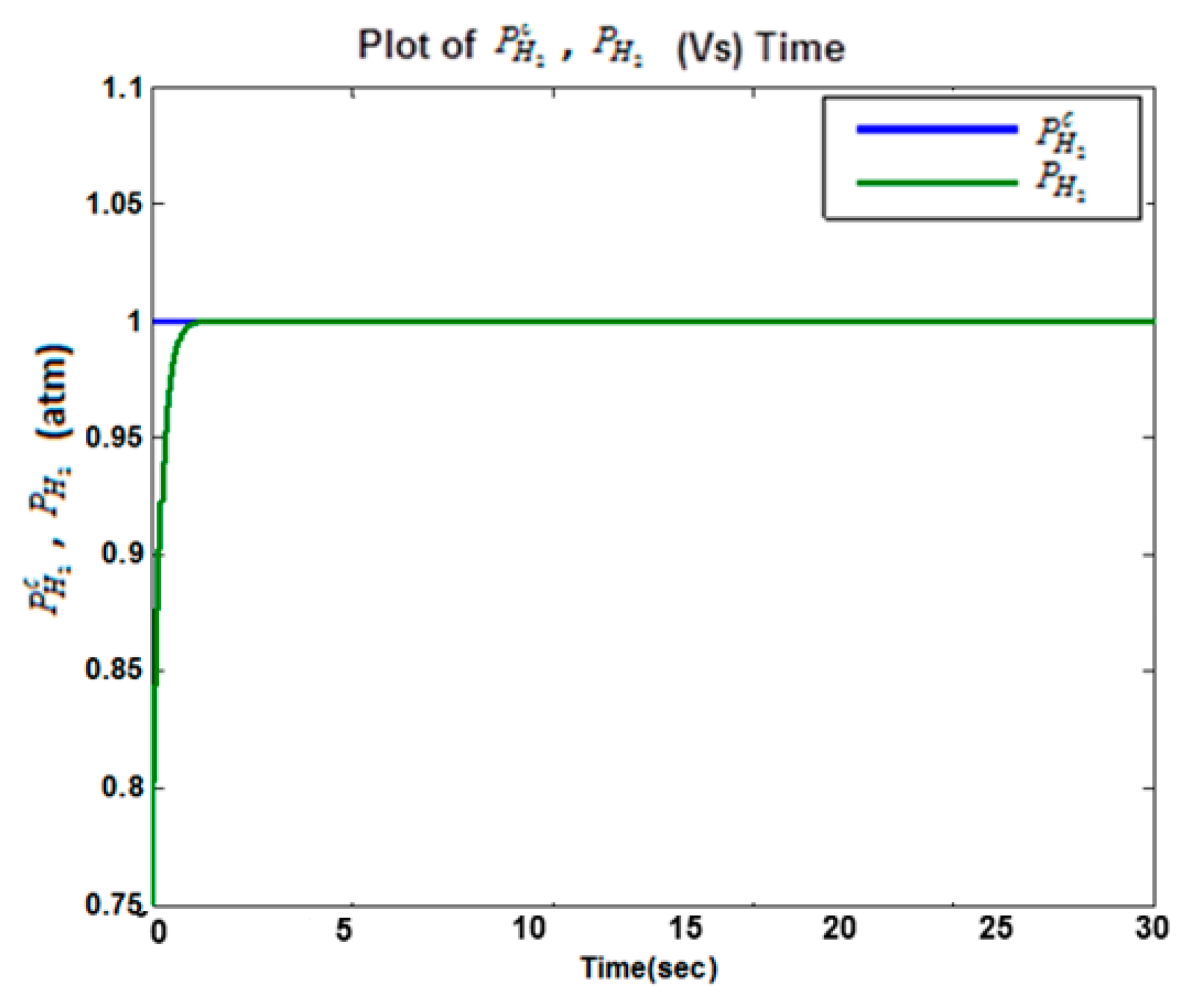

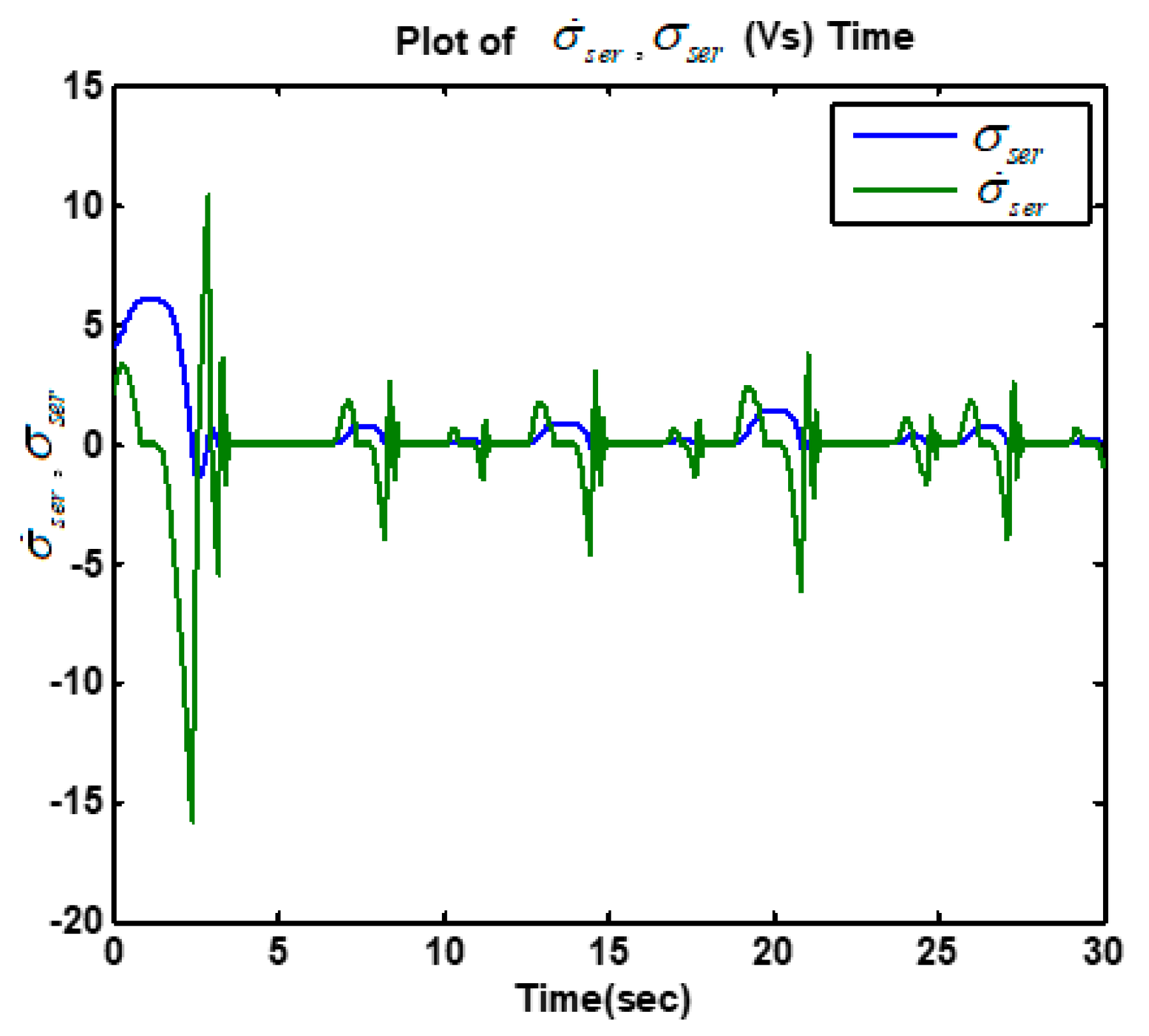
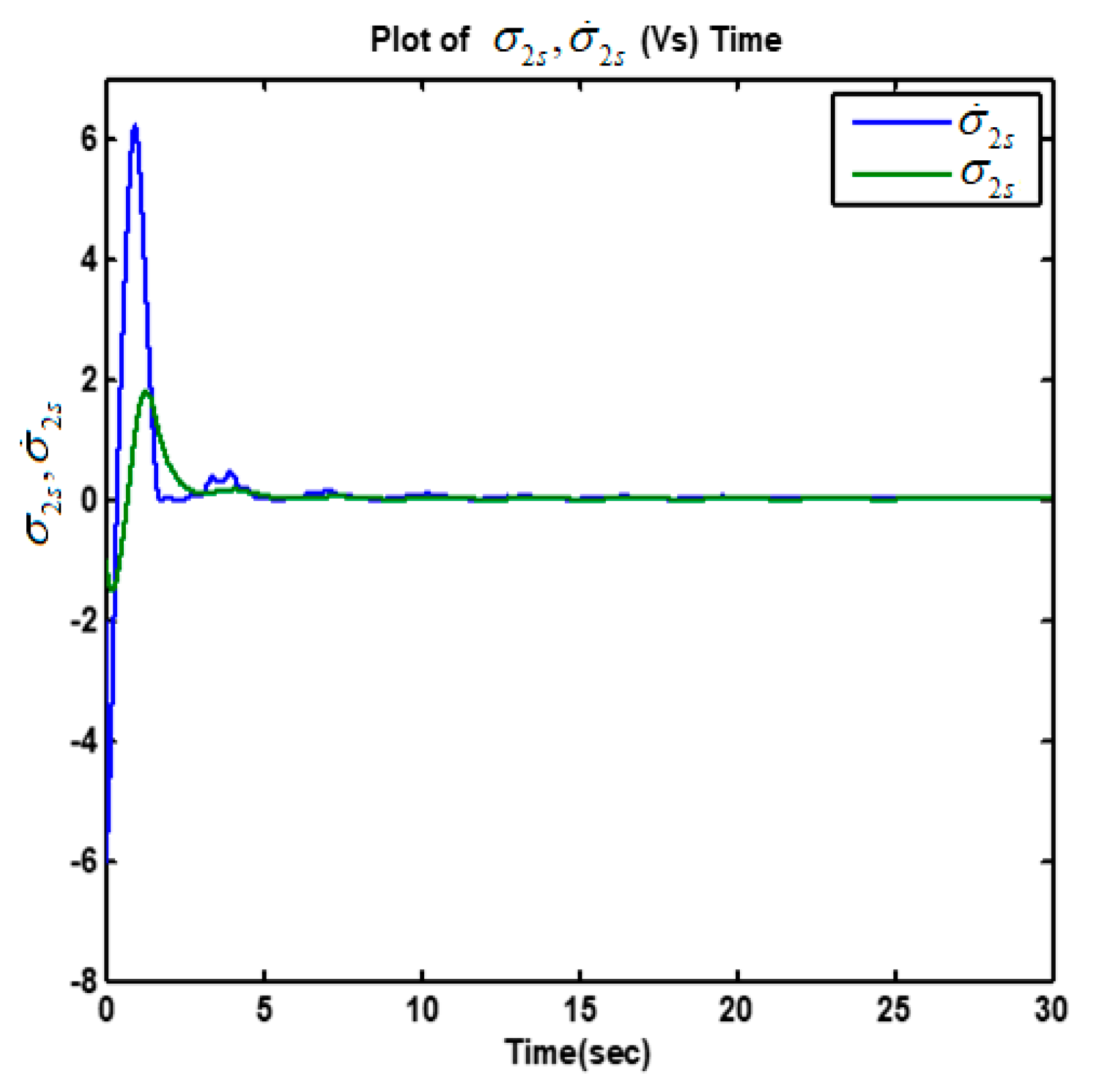
© 2020 by the authors. Licensee MDPI, Basel, Switzerland. This article is an open access article distributed under the terms and conditions of the Creative Commons Attribution (CC BY) license (http://creativecommons.org/licenses/by/4.0/).
Share and Cite
Shtessel, Y.B.; Ghanes, M.; Ashok, R.S. Hydrogen Fuel Cell and Ultracapacitor Based Electric Power System Sliding Mode Control: Electric Vehicle Application. Energies 2020, 13, 2798. https://doi.org/10.3390/en13112798
Shtessel YB, Ghanes M, Ashok RS. Hydrogen Fuel Cell and Ultracapacitor Based Electric Power System Sliding Mode Control: Electric Vehicle Application. Energies. 2020; 13(11):2798. https://doi.org/10.3390/en13112798
Chicago/Turabian StyleShtessel, Yuri B., Malek Ghanes, and Roshini S. Ashok. 2020. "Hydrogen Fuel Cell and Ultracapacitor Based Electric Power System Sliding Mode Control: Electric Vehicle Application" Energies 13, no. 11: 2798. https://doi.org/10.3390/en13112798
APA StyleShtessel, Y. B., Ghanes, M., & Ashok, R. S. (2020). Hydrogen Fuel Cell and Ultracapacitor Based Electric Power System Sliding Mode Control: Electric Vehicle Application. Energies, 13(11), 2798. https://doi.org/10.3390/en13112798





